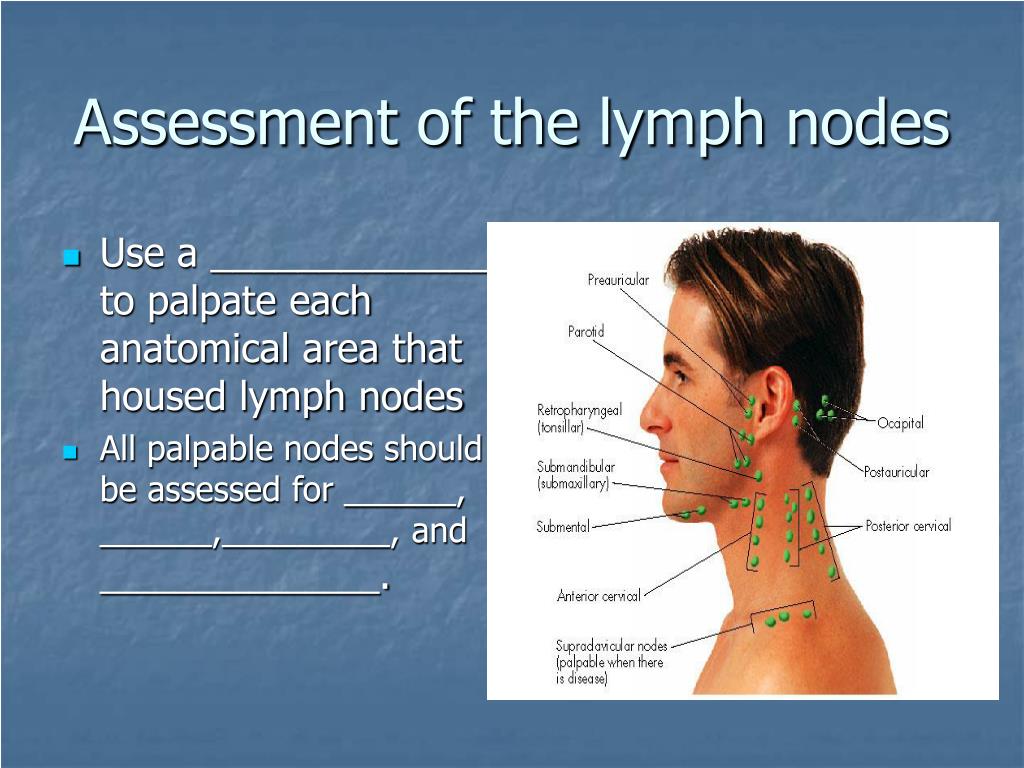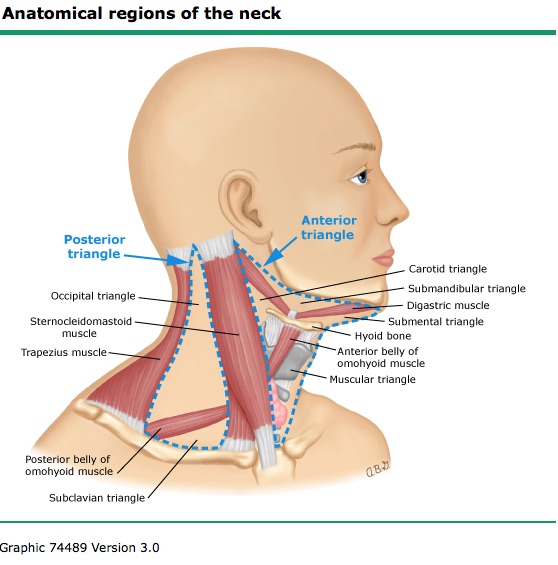Location of lymph nodes in neck diagram. Comprehensive Guide to the Cervical Lymph Nodes: Anatomy, Groups, and Drainage
Discover the comprehensive anatomy of the cervical lymph nodes. Learn about the different groups, their locations, and the drainage patterns of the lymphatic system in the head and neck region.
Anatomy of the Cervical Lymph Nodes
The cervical lymph nodes, also known as the lymph nodes of the neck, are a large group of lymph nodes that can be classified into several distinct groups based on their location and function. These groups include:
Superficial Anterior Cervical Lymph Nodes
The superficial anterior cervical lymph nodes are situated adjacent to the anterior jugular vein. These nodes drain lymph from the infrahyoid region, isthmus of the thyroid gland, and inferior larynx to the deep lateral cervical lymph nodes.
Deep Anterior Cervical Lymph Nodes
The deep anterior cervical lymph nodes are mostly located in the midline and can be divided into four groups: the prelaryngeal, thyroid, paratracheal, and pretracheal nodes. These nodes drain lymph from the larynx, trachea, and thyroid to the deep lateral cervical lymph nodes.

Superficial Lateral Cervical Lymph Nodes
The superficial lateral cervical lymph nodes are situated adjacent to the external jugular vein. They drain lymph from the parotid nodes to the supraclavicular nodes.
Deep Lateral Cervical Lymph Nodes
The deep lateral cervical lymph nodes are situated adjacent to the internal jugular vein. They can be subdivided into superior and inferior groups. These nodes receive the majority of lymph from the head and neck region and drain to the jugular trunk.
Accessory Lymph Nodes
The accessory lymph nodes are the most lateral group of cervical nodes, located adjacent to the accessory nerve. These nodes drain lymph from the lateral neck, pharynx, and shoulder regions and empty into the supraclavicular nodes.
Supraclavicular Lymph Nodes
The supraclavicular lymph nodes are situated at the root of the neck. These nodes receive lymph from the deep lateral cervical lymphatic vessels and empty into the jugular trunk on each side.
Retropharyngeal Lymph Nodes
The retropharyngeal lymph nodes are situated posterior to the pharynx. These nodes receive afferents from the nasal cavities, paranasal sinuses, soft palate, palatine arch, outer and middle ear, and drain into the superior and inferior deep lateral cervical lymph nodes of the neck.

Lymphatic Drainage of the Head and Neck
In summary, all lymphatic vessels from the head and neck drain directly or indirectly into the deep cervical lymph nodes. Lymph from these deep nodes passes to the jugular lymphatic trunk, which joins the thoracic duct on the left side and the internal jugular vein or brachiocephalic vein on the right side.
The cervical lymph nodes play a crucial role in filtering and transporting lymph from the surrounding lymph nodes and viscera back into the bloodstream, making them an important part of the body’s lymphatic system.
Key Terminology
- Cervical lymph nodes: The lymph nodes of the neck
- Nodi lymphoidei cervicales: The Latin term for cervical lymph nodes
- Nodi lymphatici cervicales: Another Latin synonym for cervical lymph nodes
- Lymphonodi cervicales: Yet another Latin synonym for cervical lymph nodes
Supplementary Resources
Interested in testing your knowledge on the lymphatics of the head and neck? Try our interactive quiz:
For a more in-depth exploration of the lymphatic system of the head and neck, check out our comprehensive study unit:

Lymphatics of the Head and Neck
Remember, all content on Kenhub is reviewed by medical and anatomy experts to ensure accuracy and quality. You can learn more about our content creation and review standards by reading our content quality guidelines.
Sources:
- Lambert, S. M. (2016). Shoulder girdle and arm. In Gray’s Anatomy: The Anatomical Basis of Clinical Practice (41st ed., p. 834). Elsevier.
- Richter, E., & Feyerabend, T. (2004). Normal lymph node topography: CT atlas. Springer.
- Iwanaga, J., Lofton, C., He, P., Dumont, A. S., & Tubbs, R. S. (2021). Lymphatic System of the Head and Neck. Journal of Craniofacial Surgery, 32(5), 1901–1905.
- Kyriacou, H., & Khan, Y. S. (n.d.). Anatomy, Shoulder and Arm, Lymphatic System. StatPearls.
Cervical lymph nodes: anatomy, groups and drainage
Author:
Roberto Grujičić MD
•
Reviewer:
Dimitrios Mytilinaios MD, PhD
Last reviewed: December 05, 2022
Reading time: 3 minutes
Superficial anterior cervical lymph nodes
Nodi lymphoidei cervicales anteriores superficiales
1/7
Synonyms:
Nodi lymphatici cervicales anteriores superficiales, Lymphonodi cervicales anteriores superficiales
The cervical lymph nodes, commonly known as the lymph nodes of the neck, are a large group of lymph nodes that can be classified into several groups. These groups of nodes include:
- The superficial anterior cervical lymph nodes that are situated adjacent to the anterior jugular vein. These nodes drain lymph from the infrahyoid region, isthmus of the thyroid gland, inferior larynx to the deep lateral cervical lymph nodes.
- The deep anterior cervical lymph nodes that are situated mostly in the midline and can be divided into four groups of nodes including the prelaryngeal, thyroid, paratracheal and pretracheal nodes.
 They drain lymph from the larynx, trachea, and thyroid to the deep lateral cervical lymph nodes.
They drain lymph from the larynx, trachea, and thyroid to the deep lateral cervical lymph nodes. - The superficial lateral cervical lymph nodes that are situated adjacent to the external jugular vein. They drain lymph from the parotid nodes to the supraclavicular nodes.
- The deep lateral cervical lymph nodes that are situated adjacent to the internal jugular vein. They can be subdivided into superior and inferior groups. These nodes receive the majority of lymph from the head and neck region and drain to the jugular trunk.
- The accessory lymph nodes that are the most lateral group of cervical nodes, located adjacent to the accessory nerve. These nodes drain lymph from the lateral neck, pharynx and shoulder regions and empty into the supraclavicular nodes.
- The supraclavicular lymph nodes that are situated at the root of the neck.
 These nodes receive lymph from the deep lateral cervical lymphatic vessels and empty into the jugular trunk on each side.
These nodes receive lymph from the deep lateral cervical lymphatic vessels and empty into the jugular trunk on each side. - The retropharyngeal lymph nodes that are situated posterior to the pharynx. These nodes receive afferents from the nasal cavities, paranasal sinuses, soft palate, palatine arch, outer and middle ear and drain into the superior and inferior deep lateral cervical lymph nodes of the neck.
In summary, all lymphatic vessels from the head and neck drain directly or indirectly into the deep cervical lymph nodes. Lymph from these deep nodes passes to the jugular lymphatic trunk, which joins the thoracic duct on the left side and the internal jugular vein or brachiocephalic vein on the right side.
|
Terminology |
English: Cervical lymph nodes English synonym: Lymph nodes of the neck Latin: Nodi lymphoidei cervicales Latin synonyms: Nodi lymphatici cervicales, Lymphonodi cervicales |
|
Main groups |
Superficial anterior cervical lymph nodes Deep anterior cervical lymph nodes Superficial lateral cervical lymph nodes Deep lateral cervical lymph nodes Accessory lymph nodes Supraclavicular lymph nodes Retropharyngeal lymph nodes |
|
Function |
Lymph nodes of the neck filter and transport lymph from surrounding lymph nodes and viscera back into the bloodstream |
vimeo.com/video/258300443″>
Test your knowledge on the lymphatics of the head and neck with this quiz.
Learn all about the lymph nodes of the head and neck with the following study unit:
Lymphatics of the head and neck
Explore study unit
All content published on Kenhub is reviewed by medical and anatomy experts. The information we provide is grounded on academic literature and peer-reviewed research. Kenhub does not provide medical advice. You can learn more about our content creation and review standards by reading our content quality guidelines.
- Lambert SM. Shoulder girdle and arm. In: Gray’s Anatomy: The Anatomical Basis of Clinical Practice. 41st ed. Elsevier; 2016. p. 834.
- Richter E, Feyerabend T. Normal lymph node topography: CT atlas. Springer; 2004.
- Iwanaga J, Lofton C, He P, Dumont AS, Tubbs RS.
 Lymphatic System of the Head and Neck. J. Craniofac. Surg. 2021;32(5):1901–5.
Lymphatic System of the Head and Neck. J. Craniofac. Surg. 2021;32(5):1901–5. -
Kyriacou H, Khan YS. Anatomy, Shoulder and Upper Limb, Axillary Lymph Nodes. StatPearls. 2021;
Cervical lymph nodes: want to learn more about it?
Our engaging videos, interactive quizzes, in-depth articles and HD atlas are here to get you top results faster.
What do you prefer to learn with?
Videos
Quizzes
Both
“I would honestly say that Kenhub cut my study time in half.”
–
Read more.
Kim Bengochea, Regis University, Denver
© Unless stated otherwise, all content, including illustrations are exclusive property of Kenhub GmbH, and are protected by German and international copyright laws. All rights reserved.
The Radiology Assistant : Cervical Lymph Node Map
modified from Robbins
Aurelia Fairise and Robin Smithuis
Institut de Cancérologie de Lorraine in Nancy, France and the Alrijne hospital in Leiderdorp, the Netherlands
Publicationdate
This article is based on the nomenclature proposed by the American Head and Neck Society and the American Academy of Otolaryngology-Head and Neck Surgery.
10 node groups are defined with a concise description of their main anatomic boundaries, the normal structures juxtaposed to these nodes, and the main tumor sites at risk for harboring metastases in those levels [1].
Overview
In this cervical lymph node map the levels were extended to 10.
Some of these are being divided into sub-levels to correspond more completely with the TNM atlas.
Borders
Important landmarks are:
- Hyoid bone
- Cricoid
- Carotids
- Sternocleidomastoid muscle
- Manubrium of sternum
Axial CT
Axial CT slices in correlation to overview illustration.
Axial CT slices in more detail.
Enlarge images by clicking on them.
Levels
I – Submental and submandibular
Nodes in level I are at risk of developing metastases from cancers of the oral cavity, anterior nasal cavity and the soft tissues of the mid-face and the submandibular gland.
Level Ia
is a median region located between the anterior belly of the digastric muscles, which contains the submental nodes.
Level Ib
contains the submandibular nodes located in the space between the inner side of the mandible laterally and the digastric muscle medially, from the symphysis menti anteriorly to the submandibular gland posteriorly.
II – Upper jugular
Level II receives lymphatics from the face, the parotid gland, and the submandibular, submental and retropharyngeal nodes.
Level II also directly receives the collecting lymphatics from the nasal cavity, the pharynx, the larynx, the external auditory canal, the middle ear, and the sublingual and submandibular glands [1].
Level II can be divided into level IIa and level IIb by drawing a line at the posterior edge of the internal jugular vein.
The nodes in level IIa and IIb are at risk of harboring metastases from cancers of the nasal and oral cavity, nasopharynx, oropharynx, hypopharynx, larynx and major salivary glands.
Level IIb is more likely associated with primary tumors of the oropharynx or nasopharynx, and less frequently with tumors of the oral cavity, larynx or hypopharynx [1].
III – Mid jugular
Level III receives efferent lymphatics from levels II and V, and some efferent lymphatics from the retropharyngeal, pretracheal and recurrent laryngeal nodes.
It collects the lymphatics from the base of the tongue, tonsils, larynx, hypopharynx and thyroid gland.
The inferior border of the cricoid is the border between level III and IVA.
Nodes in level III are at risk of harboring metastases from cancers of the oral cavity, nasopharynx, oropharynx, hypopharynx and larynx.
IV – Lower jugular and medial supraclavicular
The border between level IVa and IVb is set arbitrarily 2 cm cranial to the sterno-clavicular joint.
Level IVa
These nodes are at risk for harboring metastases from cancers of the hypopharynx, larynx, thyroid and cervical esophagus.
Rarely metastases from the anterior oral cavity may manifest in this location with minimal or no proximal nodal disease.
Level IVb
These nodes are at risk for harboring metastases from cancers of the hypopharynx, subglottic larynx, trachea, thyroid and cervical esophagus.
V – Posterior triangle and Supraclavicular
Level V contains the nodes of the posterior triangle group located posteriorly to the sternocleidomastoid muscle around the lower part of the spinal accessory nerve and the transverse cervical vessels.
Nodes in level V are most often associated with primary cancers of the nasopharynx, the oropharynx, the cutaneous structures of the posterior scalp, and the thyroid gland.
Level Vc – Supraclavicular
This level contains the lateral supraclavicular nodes located in the continuation of the posterior triangle nodes (level Va and Vb) from the cervical transverse vessels down to a limit set arbitrarily 2 cm cranial to the sternal manubrium.
It corresponds partly to the area known as the supraclavicular fossa.
Level Vc receives efferent lymphatics from the posterior triangle nodes (level Va and Vb) and is more commonly associated with nasopharyngeal tumors [1].
Transverse cervical artery
Scroll through the images for the anatomy of the transverse cervical artery.
VI – Anterior cervical
This level contains the superficial anterior jugular nodes (level VIa) and the deeper prelaryngeal, pretracheal, paratracheal and recurrent laryngeal nerve nodes (level VIb).
Level VIa
This level contains the superficially located anterior jugular nodes.
Level VIb
This level is contained between the medial borders of the common carotid arteries.
The nodes in this area are:
- pre-laryngeal nodes in front of the larynx and cricoid
- pre-tracheal nodes in front of the trachea
- paratracheal nodes also called recurrent laryngeal nerve nodes
Delphian lymph node
The Delphian lymph node derived its name from the oracle of Delphi, whose prophecy would be a death secondary to laryngeal cancer.
It is a pretracheal node in level VIa located anterior to the cricoid and in between the cricothyroid muscles.
The recurrent laryngeal nerves branch off the vagus, the left at the aortic arch, and the right at the right subclavian artery.
The left laryngeal nerve can be compressed by subaortic lymph node metastases in the aorto-pulmonary window as seen in patients with lung cancer.
VII – Retropharyngeal and retrostyloid
Retropharyngeal nodes receive lymphatics from the mucosa of the nasopharynx, the Eustachian tube and the soft palate.
These nodes are at risk of harboring metastases from cancers of the nasopharynx, the posterior pharyngeal wall and the oropharynx (mainly the tonsillar fossa and the soft palate).
Level VIIa – retropharyngeal
These nodes lie within the retropharyngeal space, extending cranially from the upper edge of the first cervical vertebrae (massa lateralis) to the cranial edge of the body of the hyoid bone caudally (figure).
This space is bounded anteriorly by the pharyngeal constrictor muscles and posteriorly by the longus capitis and longus colli muscles.
Laterally, the retropharyngeal nodes are limited by the medial edge of the internal carotid artery.
Retropharyngeal nodes receive efferent lymphatics from the mucosa of the nasopharynx, the Eustachian tube and the soft palate.
These nodes are at risk of harboring metastases from cancers of the nasopharynx, the posterior pharyngeal wall and the oropharynx (mainly the tonsillar fossa and the soft palate).
Level VIIb – retrostyloid
The retro-styloid nodes are the cranial continuation of the level II nodes.
They are located in the fatty space around the jugulo-carotid vessels up to the base of skull at the jugular foramen.
Click to enlarge
The retro-styloid space is delineated by the internal carotid artery medially, by the styloid process and the deep parotid lobe laterally, by the vertebral body of C1 and the base of skull posteriorly and by the pre-styloid para-pharyngeal space anteriorly.
VIII – Parotid
This level contains the parotid node group, which includes the subcutaneous pre-auricular nodes, the superficial and deep intraparotid nodes and the subparotid nodes.
These nodes extend from the zygomatic arch and the external auditory canal down to the mandible.
They extend from the subcutaneous tissue laterally to the styloid process medially, and from the posterior edge of the masseter and the pterygoid muscles anteriorly to the anterior edge of the sternocleidomastoid muscle and the posterior belly of the digastric muscle posteriorly [1].
Click to enlarge
The parotid group receive lymphatic from the frontal and temporal skin, the eyelids, the conjunctiva, the auricle, the external acoustic meatus, the tympanum, the nasal cavities, the root of the nose, the nasopharynx, and the Eustachian tube.
They are at risk of harboring metastases from cancers of the frontal and temporal skin, orbit, external auditory canal, nasal cavities and parotid gland.
IX – Buccofacial
Level IX contains the malar and bucco-facial node group, which includes inconsistent superficial lymph nodes around the facial vessels on the external surface of the buccinator muscle.
These nodes extend from the caudal edge of the orbit (cranially) down to the caudal edge of the mandible (caudally) where they reached level Ib.
They lay on the buccinators muscle (medially) in the sub-cutaneous tissue, from the anterior edge of the masseter muscle and the Bichat’s fat pad (posteriorly) to the anterior sub-cutaneous tissue of the face.
The bucco-facial nodes receive efferent vessels from the nose, the eyelids, and the cheek.
They are at risk of harboring metastases from cancers of the skin of the face, the nose, the maxillary sinus (infiltrating the soft tissue of the cheek) and the buccal mucosa.
X – Retroauricular and occipital
Level Xa contains the retroauricular (also called mastoid) and subauricular nodes, which includes superficial nodes lying on the mastoid process from the cranial edge of the external auditory canal cranially to the tip of the mastoid caudally.
Level Xb contains the occipital lymph nodes, which are the cranial and superficial continuation of the level Va nodes up to the cranial protuberance. They lie from the posterior edge of the sternocleidomastoid muscle to the anterior (lateral) edge of the trapezius muscle.
Lymph node metastases in level X are from skin cancers of the retro-auricular area (Xa) and skin cancers of the occipital area (Xb).
Click on the image below to get more information about Medical Action Myanmar, a medical organization run by Nini Tun and Frank Smithuis, who happens to be the brother of Robin Smithuis.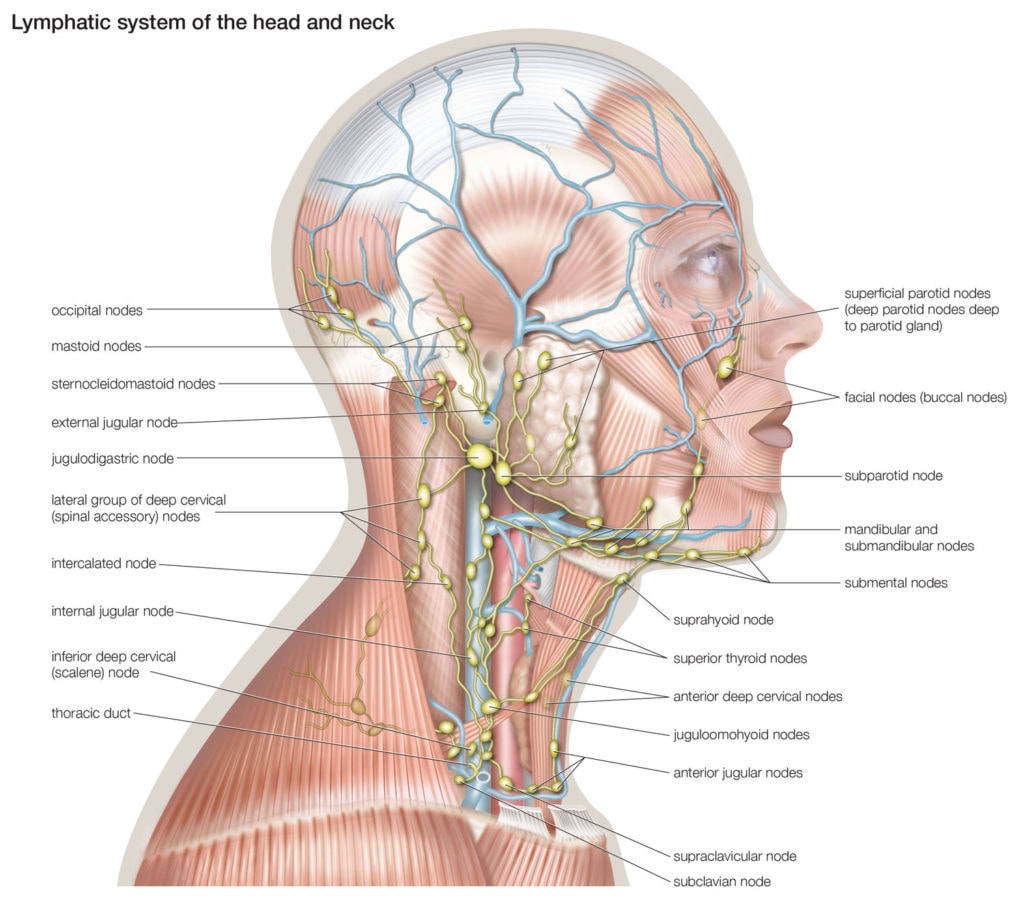
- Delineation of the neck node levels for head and neck tumors: A 2013 update. DAHANCA, EORTC, HKNPCSG, NCIC CTG, NCRI, RTOG, TROG consensus guidelines
DAHANCA, EORTC, HKNPCSG,NCIC CTG, NCRI, RTOG, TROG consensus guidelines.
by V Grégoire et al.
Radiother Oncol 2014 ;110:172–81. Integrating radiological criteria into the classification of cervical lymph node disease.
by Robbins KT.
Arch Otolaryngol Head Neck Surg 1999 ;125:385–7.- International association for the study of lung cancer (IASLC) lymph node map: radiologic review with CT illustration.
by El-Sherief AH, Lau CT, Wu CC, Drake RL, Abbott GF, Rice TW.

Radiographics. 2014 Oct;34(6):1680-91.
Why there is inflammation of the lymph nodes in the neck: causes, symptoms, treatment
Contents
- 1 Causes and treatment of inflammation of the lymph nodes in the neck: how to get rid of unpleasant symptoms?
- 1.1 Causes of inflammation of the lymph nodes in the neck
- 1.1.1 Infections
- 1.1.2 Dental problems
- 1.1.3 Skin lesions
- 1.1.4 Oncology
- 1.2 Symptoms of inflammation of the lymph nodes in the neck
- 1.2.1 General information
- 1.2.2 Symptoms of swollen lymph nodes in the neck
- 1.2.3 When should I see a doctor?
- 1.3 Diagnosis of inflammation of the lymph nodes in the neck
- 1.3.1 Medical history
- 1.3.2 Examination
- 1.3.3 Laboratory and instrumental studies
- 1.
 3.4 Biopsy
3.4 Biopsy
- 1.4 Treatment of inflammation of the lymph nodes in the neck
- 1.4.1 General principles of treatment
- 1.4.2 Treatment of swollen lymph nodes in the neck in children
- 1.4.3 Treatment of inflammation of the lymph nodes in the neck with lymphadenitis
- 1.5 How to avoid inflammation of the lymph nodes in the neck?
- 1.6 Inflammation of the lymph nodes in children
- 1.6.1 Causes
- 1.6.2 Symptoms
- 1.6.3 Treatment
- 1.6.4 Prevention
- 1.7 When should you see a doctor for swollen lymph nodes in your neck?
- 1.8 Association between swollen lymph nodes in the neck and cancer
- 1.9 Other causes of swollen lymph nodes in the neck
- 1.10 Conclusions
- 1.11 Related videos:
- 1.12 Q&A:
- 1.12.0.1 What are lymph nodes and why do the body need them?
- 1.12.0.2 What causes inflammation of the lymph nodes in the neck?
- 1.
 12.0.3 How is inflammation of the lymph nodes in the neck diagnosed?
12.0.3 How is inflammation of the lymph nodes in the neck diagnosed? - 1.12.0.4 How is swollen lymph nodes in the neck treated?
- 1.12.0.5 Can swollen lymph nodes in the neck go away on their own?
- 1.12.0.6 How can inflammation of the lymph nodes in the neck be prevented?
- 1.1 Causes of inflammation of the lymph nodes in the neck
Find out the main causes of inflammation of the lymph nodes in the neck and how they can be treated to restore health and improve well-being. Read the article on our website and do not put off taking care of your health!
Lymph nodes are part of the body’s lymphatic system that perform an important protective function. They act as a barrier that prevents the penetration of infections and harmful substances into the tissues and organs of the human body. However, sometimes the lymph nodes themselves can become the site of infection or stress conditions, causing inflammation and enlargement.
Especially often the lymph nodes become inflamed in the neck, where a large number of lymph nodes are located. The causes of inflammation can be diseases of the upper respiratory tract (throat, nose), teeth, ulcers, colds. Also, inflammation of the lymph nodes in the neck can be a sign of serious diseases – tumors, infections, tuberculosis.
The causes of inflammation can be diseases of the upper respiratory tract (throat, nose), teeth, ulcers, colds. Also, inflammation of the lymph nodes in the neck can be a sign of serious diseases – tumors, infections, tuberculosis.
To identify inflammation of the lymph nodes and determine the causes of its occurrence, it is necessary to conduct a diagnosis and consult a specialist. Depending on the circumstances, treatment may include the use of antibiotics, anti-inflammatory and anti-tuberculosis drugs, recommendations to strengthen the immune system and prevent possible diseases.
Causes of inflammation of the lymph nodes in the neck
Infections
Inflammation of the lymph nodes in the neck can be caused by various infections. For example, it can be the flu, SARS, tonsillitis, runny nose, chicken pox, streptococcal infection and others. During the body’s fight against infection, the lymph nodes increase in size and become inflamed, which signals that the body is fighting the infection.
Dental problems
Inflammation of the lymph nodes in the neck can be associated with diseases of the teeth and gums, such as caries, gingivitis, periodontitis. In this case, the inflammation of the lymph nodes is the body’s response to the bacteria that cause the disease.
Skin lesions
Injuries and various injuries to the scalp and neck can also lead to inflammation of the lymph nodes in the neck. Lymph nodes become inflamed to help the body fight infection that can occur as a result of skin damage.
Oncology
It is possible that inflammation of the lymph nodes in the neck may be associated with various cancers, such as lymphoma or head and neck cancer. In such cases, the inflammation of the lymph nodes does not go away, but increases with time, so it is important to consult a doctor to rule out oncology.
Symptoms of inflammation of the lymph nodes in the neck
General information
Inflammation of the lymph nodes in the neck is often a sign of an infection in the body.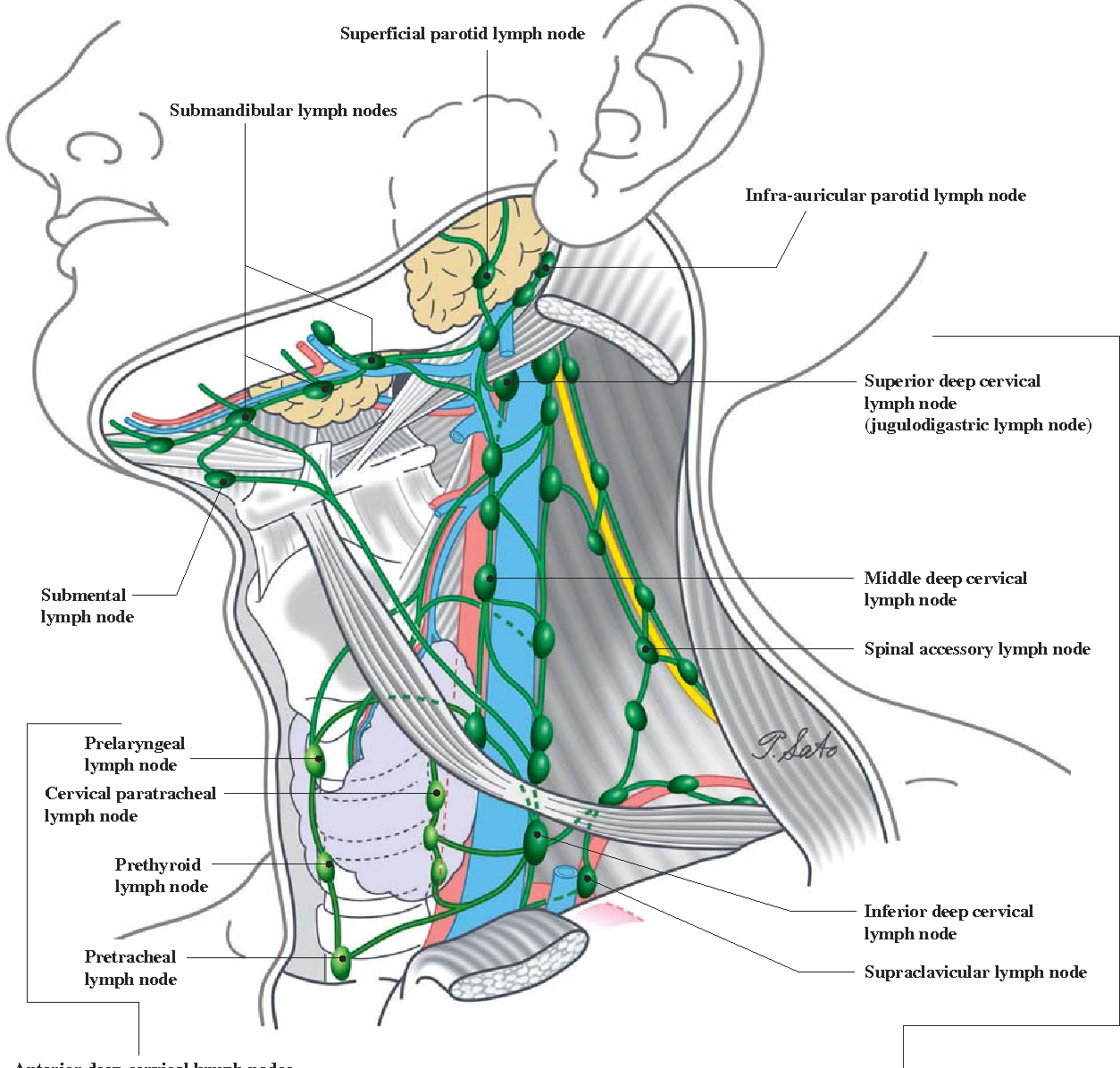 The lymph nodes in the neck are close to the surface of the skin and their inflammation can lead to pain and discomfort.
The lymph nodes in the neck are close to the surface of the skin and their inflammation can lead to pain and discomfort.
Symptoms of inflammation of the lymph nodes in the neck
The main symptoms of inflammation of the lymph nodes in the neck are:
- Hypersensitivity in the area of the lymph nodes;
- Soreness when touching lymph nodes;
- Enlarged lymph nodes. Depending on the cause of inflammation of the lymph nodes, they may increase in size to varying degrees;
- Swelling of surrounding tissues in the area of inflammation of the lymph nodes;
- Headache, fever, fatigue, general malaise.
When should I see a doctor?
If you notice swelling and tenderness of the lymph nodes in your neck, be sure to seek medical attention. The doctor will conduct the necessary examination and find out the cause of the inflammation of the lymph nodes and prescribe an effective treatment.
Diagnosis of inflammation of the lymph nodes in the neck
Medical history
The first step in the diagnosis of inflammation of the lymph nodes in the neck is to take an anamnesis of the disease. The doctor should ask the patient about the presence of symptoms such as sore throat, runny nose, cough, fever. It is also necessary to find out if the patient has had similar symptoms before and how they were treated.
Examination
After taking the medical history, the patient is examined. The doctor checks for swelling and redness in the neck. He also palpates the lymph nodes and determines their size and condition. If a tumor is present, the doctor may recommend a more detailed examination.
Laboratory and instrumental research
Laboratory and instrumental research methods are used to diagnose inflammation of the lymph nodes in the neck. Blood is taken for general analysis and detection of inflammatory processes in the body. You can also prescribe an ultrasound to more accurately identify the condition of the lymph nodes and determine the presence of tumors.
Biopsy
In some cases, a biopsy may be ordered to determine the cause of swollen lymph nodes in the neck. During a biopsy, a small sample of lymph node tissue is taken and examined under a microscope. This allows you to identify the presence of infectious agents or tumors.
Treatment of inflammation of the lymph nodes in the neck
General principles of treatment
Treatment of inflammation of the lymph nodes in the neck depends on its cause. However, there are general principles of treatment:
- Prescription of antiviral, antibacterial or antifungal drugs;
- Use of anti-inflammatory and analgesic drugs;
- Completeness and correctness of nutrition;
- Physiotherapy.
A few days before the start of treatment, it is recommended to avoid smoking, drinking alcohol and fatigue.
Treatment of swollen lymph nodes in the neck in children
In case of swollen lymph nodes in the neck of children, a pediatrician should be consulted. The purpose of treatment depends on the cause of the inflammation. However, there are general principles of treatment:
The purpose of treatment depends on the cause of the inflammation. However, there are general principles of treatment:
- Carrying out hygiene procedures;
- Use of anti-inflammatory drugs, certain antibiotics or antimycotic drugs;
- Completeness and correctness of nutrition.
Treatment of inflammation of the lymph nodes in the neck with lymphadenitis
Lymphadenitis is an acute form of inflammation of the lymph nodes in the neck, which can lead to complications. For lymphadenitis, along with the standard treatment needed for other forms of inflammation of the lymph nodes in the neck, local therapy is carried out:
- Use of antibiotics;
- Washing the inflamed area;
- Use of medical dressings or application of a medical compress;
- Occasionally, surgery may be required to remove pus deposits.
In case of lymphadenitis, it is not recommended to prescribe treatment on your own, you should consult an infectologist or otolaryngologist.
How to avoid inflammation of the lymph nodes in the neck?
Lymph nodes in the neck are part of our immune system that protects us from infection and disease. They may enlarge due to inflammation, also known as lymphadenitis.
To prevent inflammation of the lymph nodes, it is recommended:
- Take care of hygiene – Wash your hands regularly and practice basic hygiene. This helps prevent infection and the spread of bacteria and infections.
- Avoid possible sources of infection – Avoid contact with people who have infectious diseases such as influenza or SARS.
- Support the immune system – Try to maintain a healthy lifestyle, including proper nutrition and physical activity. It strengthens the immune system and helps fight viral and bacterial infections.
If you have signs of swollen lymph nodes, such as soreness or redness in your neck, seek medical attention. Don’t try to treat yourself, as this can make the problem worse.
Inflammation of the lymph nodes in children
Causes
Inflammation of the lymph nodes is a signal that disease processes are occurring in the child’s body. It can be caused by infectious diseases such as SARS, influenza or tonsillitis, as well as a number of other acute diseases. In addition, the lymph nodes can become inflamed as a result of allergic reactions to food, medicines, or other allergens.
Symptoms
Symptoms of swollen lymph nodes in children may vary depending on the cause of the disease. Usually, swollen lymph nodes in the neck cause pain and discomfort, as well as an increase in their size. The child may experience weakness, dizziness, low body temperature, fever and other symptoms that are characteristic of a disease that causes inflammation of the lymph nodes.
Treatment
Treatment of inflammation of the lymph nodes in children should be directed to the treatment of the underlying disease. If the inflammation is caused by a bacterial infection, the doctor may prescribe antibiotics. In the event of an allergic reaction, it is necessary to identify the allergen and eliminate it from the child’s diet. In most cases, inflamed lymph nodes go away on their own after the treatment of the underlying disease. However, if necessary, the doctor may prescribe anti-inflammatory or pain medication.
In the event of an allergic reaction, it is necessary to identify the allergen and eliminate it from the child’s diet. In most cases, inflamed lymph nodes go away on their own after the treatment of the underlying disease. However, if necessary, the doctor may prescribe anti-inflammatory or pain medication.
Prevention
- Avoid contact between the child and sick people;
- Strengthen your child’s immune system: maintain a healthy lifestyle, eat right, spend a lot of time outdoors;
- Wash your hands regularly and teach your child to do the same;
- Take care of your child’s oral hygiene: brush your teeth, use dental floss and mouth water;
- Get all the necessary vaccinations, if necessary, to boost your child’s immune system.
When should you see a doctor for swollen lymph nodes in your neck?
Inflammation of the lymph nodes in the neck can be a sign of various diseases. In most cases, it is caused by an infection, but it can also be a sign of a more serious condition, such as cancer.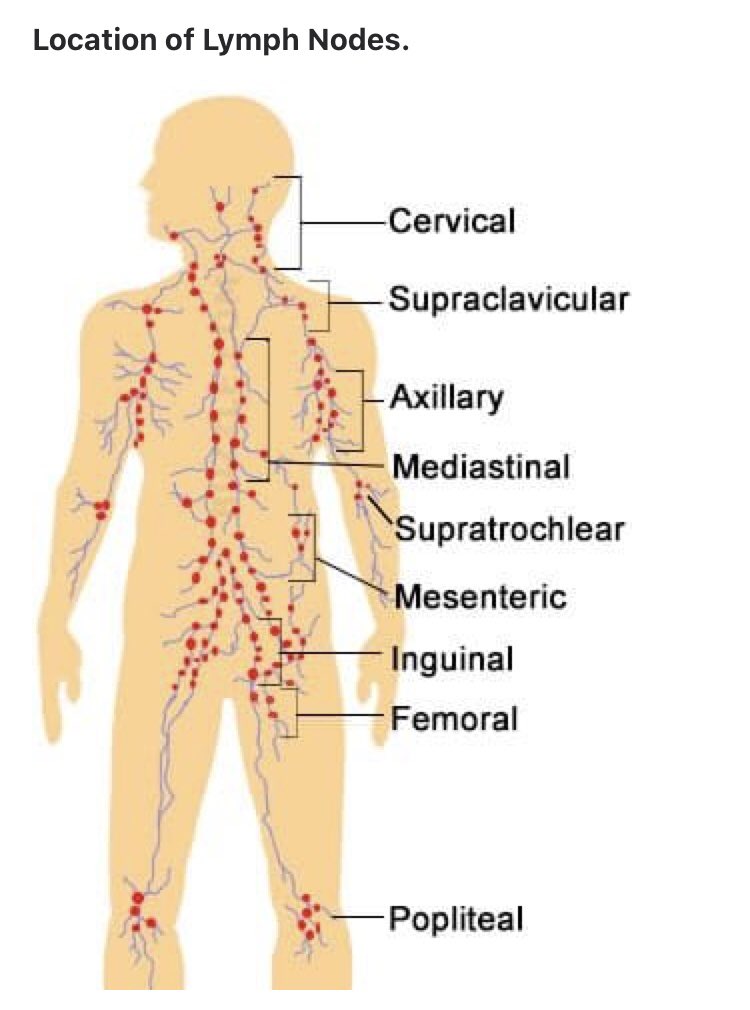 Therefore, it is very important to see a doctor if you experience the following symptoms:
Therefore, it is very important to see a doctor if you experience the following symptoms:
- Swollen lymph nodes: If you notice swollen lymph nodes in your neck, this may indicate an infection or tumor. If the lymph nodes have become longer for a long time, be sure to visit a doctor.
- Pain: If you feel pain on palpation of the lymph nodes or if they become tender, this may indicate an infection or inflammation. However, it can also be a sign of a more serious illness. In any case, this requires the attention of a doctor.
- Bitterness in the mouth: If you feel that you have a bitter taste in your mouth after eating, this may be a sign of swollen lymph nodes. Consult a doctor to clarify the diagnosis.
- High temperature: If you have other symptoms associated with inflammation of the lymph nodes, as well as fever, this may indicate more serious diseases, such as viral and bacterial infections.

Association between swollen lymph nodes in the neck and cancer
Swollen lymph nodes in the neck can be caused by many factors, one of which is cancer. Cancer occurs in tissues, which are made up of cells that grow and divide rapidly. When these cells begin to grow and multiply in an uncontrolled way, they form a tumor. This tumor can spread to nearby tissues, including lymph nodes.
However, inflammation of the lymph nodes in the neck is not always associated with cancer. There are many other causes such as infections, allergies, or diseases that can cause swollen lymph nodes in the neck. Therefore, if you find an inflamed lymph node, do not panic and consult a doctor to establish the correct diagnosis.
In any case, if you suspect cancer, you should see an oncologist for diagnosis and treatment. Cancer is a serious disease that requires complex treatment, including surgery, chemotherapy and radiation therapy.
In conclusion, swollen lymph nodes in the neck may be associated with cancer, but not always. Therefore, if you find an inflamed lymph node, do not waste time and contact a specialist to establish an accurate diagnosis and prescribe the correct treatment.
Therefore, if you find an inflamed lymph node, do not waste time and contact a specialist to establish an accurate diagnosis and prescribe the correct treatment.
Other causes of inflammation of the lymph nodes in the neck
Although the most common cause of inflammation of the lymph nodes in the neck is associated with infectious diseases, there are other causes of this condition. For example, some types of cancer can lead to swollen lymph nodes, which can also cause inflammation. Blood diseases such as lymphoma and leukemia can also cause swollen lymph nodes.
Inflammation of the lymph nodes in the neck can also be caused by certain drugs. For example, antibiotics and antidepressants can cause a reaction in the body, which manifests itself in the form of inflammation of the lymph nodes. Some causes of inflammation, such as thrombophilia and metastatic cancer, can also lead to swollen lymph nodes in the neck.
- Reminder: If the lymph nodes in the neck are enlarged and do not go away for more than two weeks, it is necessary to see a doctor for diagnosis and treatment.

Conclusions
As a result of the study, we can draw the following conclusions:
- Inflammation of the lymph nodes in the neck is a fairly common disease . It can cause discomfort and pain in the neck, as well as act as a symptom of other diseases, such as influenza or SARS.
- There are several types of lymph nodes in the neck, all of which can be inflamed . This can be determined by a doctor during examination and palpation of the throat and neck.
- Inflammation of the lymph nodes in the neck can occur due to various causes such as bacterial or viral infections, autoimmune diseases or cancer. Each of these causes may require its own treatment.
- Treatment of inflammation of the lymph nodes in the neck depends on its cause . This may include medication, physical therapy, or even surgery if malignant tumors are found.
- To prevent inflammation of the lymph nodes in the neck, you need to pay attention to your health , strengthen the immune system, observe hygiene and disease prevention.

In general, inflammation of the lymph nodes in the neck is not a dangerous disease, but requires careful attention and timely treatment. At the first symptoms, you should consult a doctor to diagnose and determine the correct treatment.
Related videos:
Q&A:
What are lymph nodes and why do the body need them?
Lymph nodes are small organs of the lymphatic system that play an important role in protecting the body from infection and disease. They filter the lymph, remove bacteria, viruses and other impurities from it, and also produce lymphocytes – cells that develop immune responses to diseases.
What causes inflammation of the lymph nodes in the neck?
Inflammation of the lymph nodes in the neck can be caused by various causes, such as infectious diseases (influenza, SARS, tonsillitis), viruses (HIV, herpes), bacteria (staphylococcus aureus, streptococcus), cancer, allergic reactions, as well as reactions to drugs or vaccinations.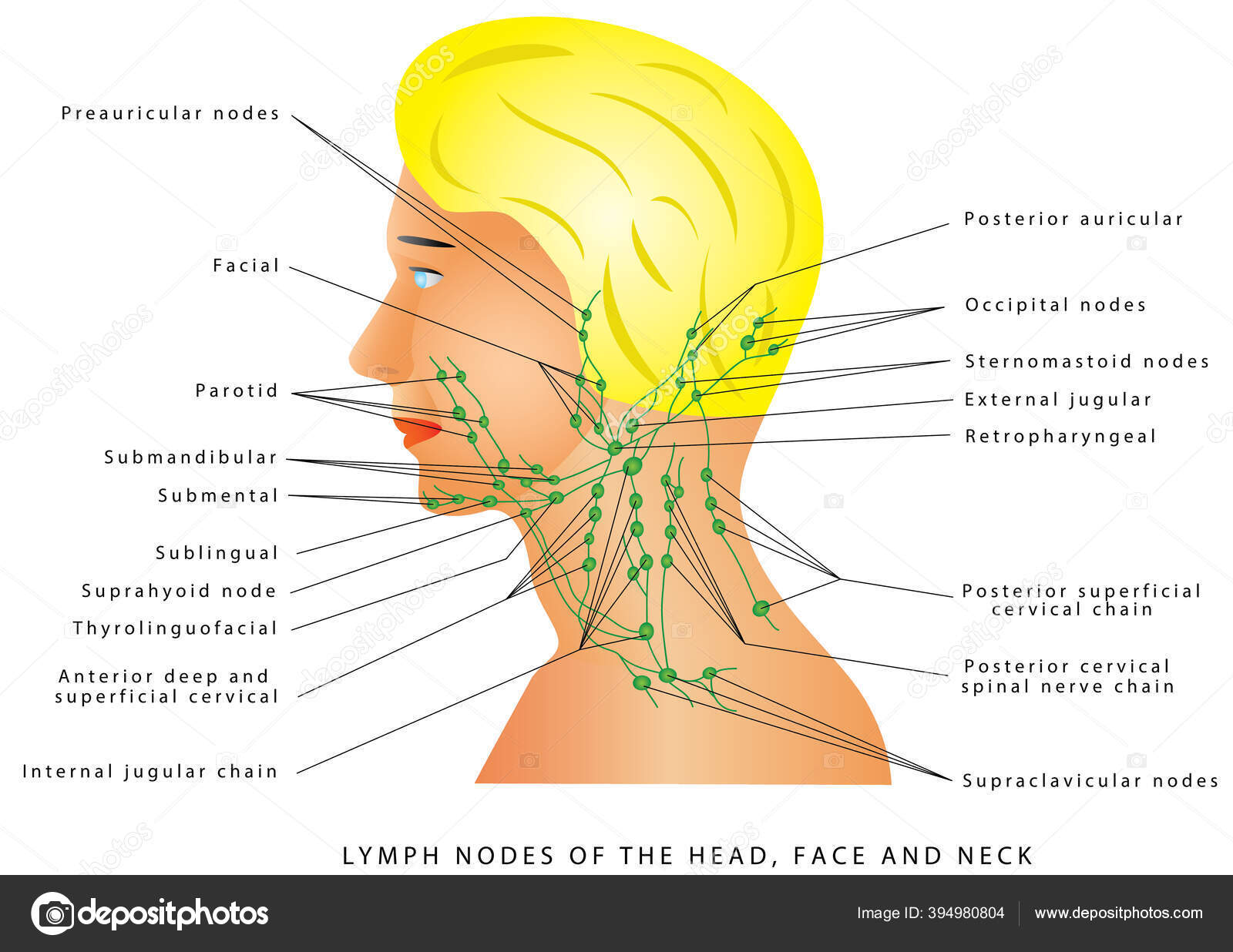
How is inflammation of the lymph nodes in the neck diagnosed?
Diagnosis of inflammation of the lymph nodes in the neck begins with a visual examination and palpation of the lymph nodes. Further, ultrasound, computed tomography, magnetic resonance imaging, biopsy and other research methods may be prescribed to determine the cause of inflammation.
How is inflammation of the lymph nodes in the neck treated?
Treatment of inflammation of the lymph nodes in the neck depends on the cause that caused the inflammation. Antibiotics are commonly used to treat infectious diseases, antiviral drugs for viral diseases, and antihistamines for allergic reactions. In cases of cancer, surgery, chemotherapy, and radiation therapy may be prescribed.
Can swollen lymph nodes in the neck go away on their own?
Yes, swollen lymph nodes in the neck can go away on their own if they were caused by an infectious disease and the body has coped with the disease.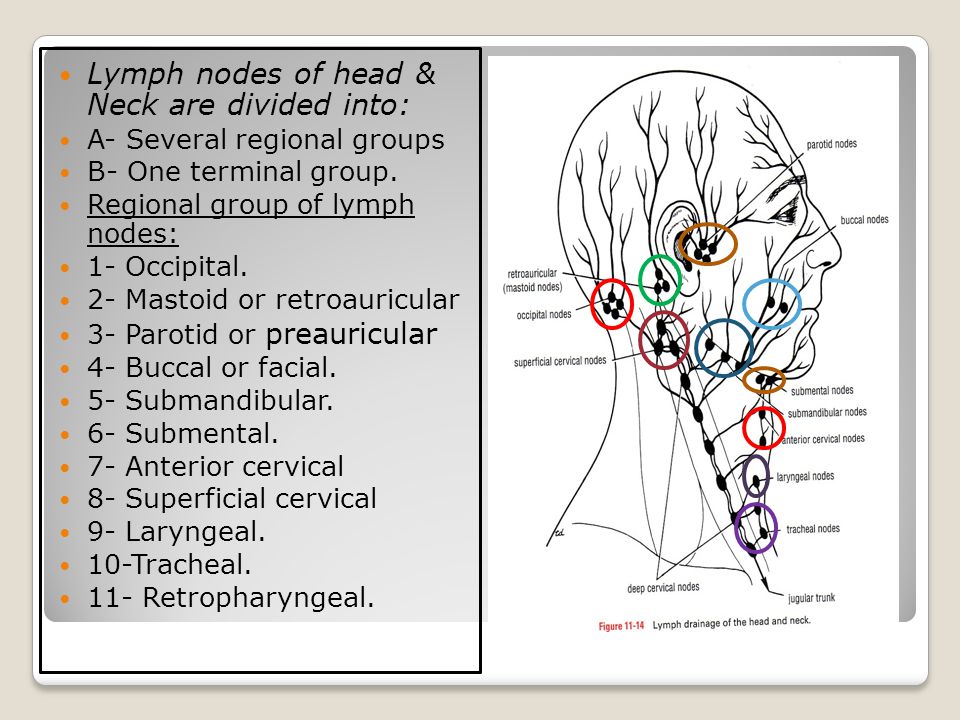 However, if the inflammation does not go away within a few weeks or other symptoms appear, it is necessary to see a doctor for diagnosis and treatment.
However, if the inflammation does not go away within a few weeks or other symptoms appear, it is necessary to see a doctor for diagnosis and treatment.
How can inflammation of the lymph nodes in the neck be prevented?
To prevent inflammation of the lymph nodes in the neck, it is necessary to practice good hygiene, wash your hands regularly and avoid contact with sick people. It is also recommended to strengthen the immune system, eat right, lead an active lifestyle and avoid stressful situations.
What to do if lymph nodes in the neck are swollen
Lymph nodes in the neck are swollen, usually due to contact with bacteria and viruses. If the enlargement is caused by an infection, it is called lymphadenitis. Rarely, cancer can be the cause.
The lymphatic system plays a vital role in keeping our body alive and is a major component of our immunity. Lymph nodes can be felt in the neck, chin, armpits and groin. In some cases, no action is required for treatment and a warm compress is enough. Treatment depends on the cause.
Treatment depends on the cause.
Symptoms
The lymphatic system includes a network of organs and lymph nodes located throughout the body. Most of them are in the head and neck area. Swollen lymph nodes indicate that something is wrong in the body. The first signs are sensitivity, soreness and an increase in lymph nodes to the size of a bean and even more.
Depending on the cause of the appearance, the symptoms of the disease may be as follows:
Runny nose, sore throat, fever and other signs of an upper respiratory tract infection.
Swollen lymph nodes throughout the body may indicate HIV, mononucleosis, or immune disorders such as lupus or rheumatoid arthritis.
Swollen limbs may indicate a blockage in the lymphatic system caused by tumors in the lymph nodes that are deep under the skin and cannot be felt.
When treatment of lymph nodes in the neck requires a visit to a doctor
Lymph nodes return to normal over time if the cause of the increase was an infection that was treatable. But there are a number of factors in which you should consult a doctor:
But there are a number of factors in which you should consult a doctor:
- Swelling without apparent cause
- Duration 2-4 weeks
- Knots are difficult to feel and do not move when pressed
- Associated with persistent fevers, night sweats and weight loss
- Accompanied by sore throat and difficulty in swallowing.
Why lymph nodes in the neck become inflamed – causes
A lymph node is a small, round or bean-shaped cluster of cells covered with a capsule of connective tissue. The cells are a combination of lymphocytes that produce protein particles that fight viruses and macrophages that break down harmful substances. Lymphocytes and macrophages filter the lymphatic fluid that flows throughout the body and protects us.
Lymph nodes are located in groups, each of which serves a specific area of the body. An increase in a specific area may suggest a cause. The most common is an infection, especially a viral one, such as a cold.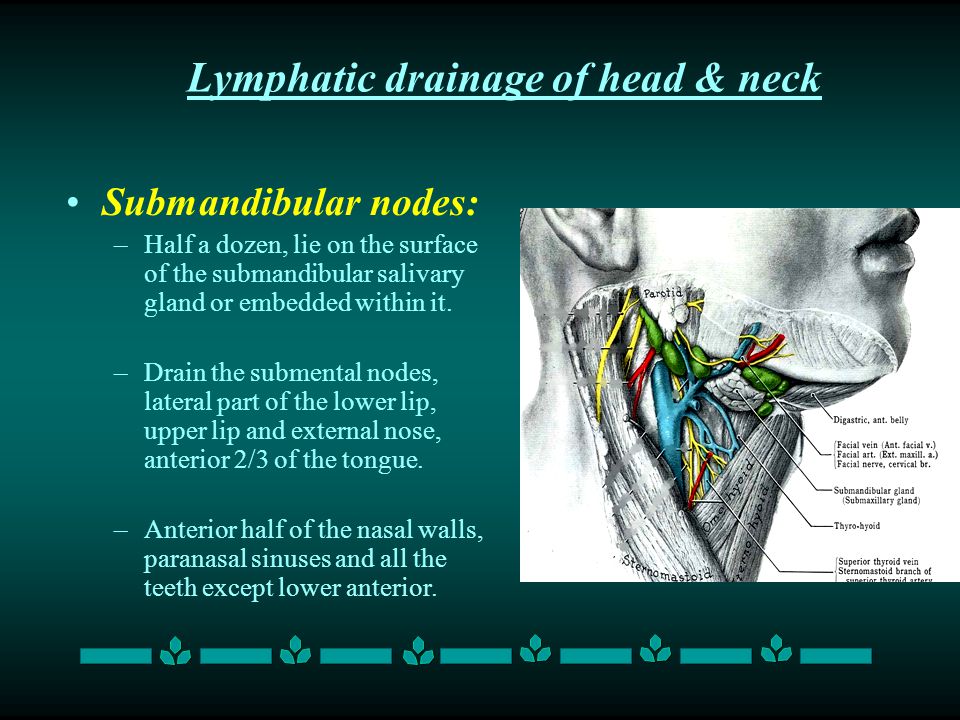 But there are other types0136 lymphadenitis of the cervical lymph nodes , such as parasitic or bacterial, which can cause enlargement of the lymph nodes.
But there are other types0136 lymphadenitis of the cervical lymph nodes , such as parasitic or bacterial, which can cause enlargement of the lymph nodes.
Common infections:
- Measles
- Ear infections
- Infection of the tooth – abscess
- Mononucleosis
- Skin infections
- HIV
Atypical infections:
- Tuberculosis
- Sexually transmitted (syphilis and others)
- Toxoplasmosis
- Bacterial infection from cat scratch
Autoimmune diseases:
- Lupus
- Rheumatoid arthritis
Cancer:
- Lymphoma
- Leukemia
- Other cancers that have spread to lymph nodes
Complications
If the cause is an infection and not properly treated, complications may occur.
Abscess formation. Localization of the accumulation of pus caused by infection. Pus contains fluid, white blood cells, dead tissue, bacteria, and other harmful elements. If an abscess occurs, drainage or antibiotic treatment may be required. Significant damage can be done if vital organs are affected.
Pus contains fluid, white blood cells, dead tissue, bacteria, and other harmful elements. If an abscess occurs, drainage or antibiotic treatment may be required. Significant damage can be done if vital organs are affected.
Bloodstream infection. Bacterial, can start anywhere in your body and progress to sepsis caused by significant blood poisoning. Sepsis can lead to multiple organ failure and death. Treatment includes hospitalization and intravenous antibiotics.
Diagnosis
To diagnose an illness, your doctor may need to:
- Medical history
- Medical examination
- Blood test
- Chest x-ray and computed tomography
- Lymph node biopsy (as a last resort).
Treatment of lymph nodes in the neck
If the cause is a virus, the lymph nodes in the neck will recover on their own after the infection itself is treated. But if this does not happen or there is another reason, the following treatment may be required:
- Infection.


 They drain lymph from the larynx, trachea, and thyroid to the deep lateral cervical lymph nodes.
They drain lymph from the larynx, trachea, and thyroid to the deep lateral cervical lymph nodes.  These nodes receive lymph from the deep lateral cervical lymphatic vessels and empty into the jugular trunk on each side.
These nodes receive lymph from the deep lateral cervical lymphatic vessels and empty into the jugular trunk on each side.  Lymphatic System of the Head and Neck. J. Craniofac. Surg. 2021;32(5):1901–5.
Lymphatic System of the Head and Neck. J. Craniofac. Surg. 2021;32(5):1901–5.
 3.4 Biopsy
3.4 Biopsy 12.0.3 How is inflammation of the lymph nodes in the neck diagnosed?
12.0.3 How is inflammation of the lymph nodes in the neck diagnosed?
